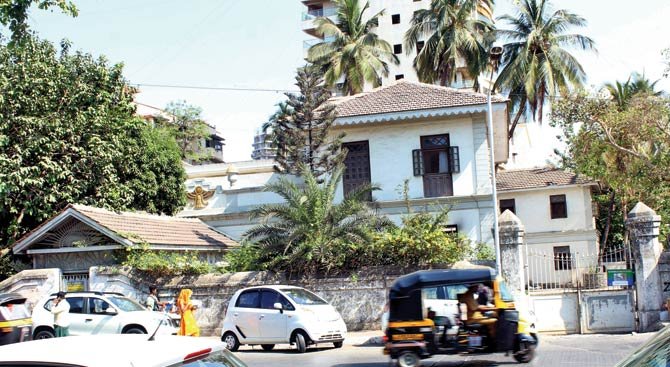Parsis divided over use of ceramic tiles in fire temple
Members of the Mumbai’s Parsi-Zoroastrian community has questioned the use of ceramic tiles during the restoration of a heritage-listed fire temple in Dhobhi Talao.
The fire temple, Atash Behram, which is one of the holiest Zoroastrian shrines, is undergoing maintenance and renovation work. However, the contractor in question has replaced the old tiles and lime plaster with white ceramic tiles.
Aspi Deboo, businessman and a member of the community, has approached the trustees of the fire temple and contractor working on it, on the grounds that the original stone tiles should be retained inside the temple. “Dark grey or black stone tiles were always used in Atash Behram and the inner sanctum sanctorum, as they give out the holy vibe of mathravani (chanting of the prayers) of the priests and the devotees. With the laying of smooth white glossy ceramic tiles, the efficacy of the prayers is lost,” said Deboo.
The shrine is 123-years-old and is the highest grade of consecrated fire according to Zoroastrianism. It is among the eight Atash Behrams in India, four of which are in Mumbai. The fire temple is also a protected grade-3 heritage structure under Mumbai’s urban heritage conservation laws, which allows only changes and adaptive re-use for such buildings.
“The structure needs to be maintained as it was. When stone tiles are available why should they be replaced with ceramic ones,” said Deboo.
However, one of the trustees said that they have approached the municipal heritage committee seeking a report on the structure, and would be issuing a statement only once the report is out.
Conservation experts said that changes that can be made in a heritage structure are decided on a case to case basis. “However, considering it is a grade 3 heritage structure, certain changes are allowed but the actual nature of the heritage structure needs to be maintained. The rules for grade – I heritage structure are more stringent, where no changes can be made,” said Rahul Chemburkar, conservation architect.
Several community members, who are frequent visitors at the fire temple said that they supported the decision of the trustees to use ceramic tiles instead of plaster because the room would look brighter and would reduce the efforts for cleaning of the walls due to the smoke emitted from the fire.
aced the old tiles and lime plaster with white ceramic tiles.
The restoration work has divided worshippers. Aspi Deboo, businessman and a member of the community, objected to the use of ceramic tiles and has approached trustees of the fire temple and contractor working on it, on the grounds that the original stone tiles should be retained inside the temple. “Dark grey or black stone tiles were always used in a Atashbehram and the inner sanctum sanctorum as they retain the vibrations of the holy mathravani (chanting of the prayers) of the priests and the devotees. With the laying of smooth white glossy ceramic tiles the efficacy of the prayers is lost,” said Deboo.
A meeting was to be held between the trustees, contractor and Deboo on Thursday. However, when contacted, Deboo said that he has been meeting the contractor on a regular basis and they have decided that stone tiles will be used for sanctum sanctorum. The shrine is 123-years-old and is the highest grade of consecrated fire according to Zoroastrianism. It is among eight Atash Behrams in India, four of which are in Mumbai. The fire temple is also a protected grade-III heritage structure under Mumbai’s urban heritage conservation laws which allows only changes and adaptive re-use for such buildings.
“Though the heritage aspect is secondary for us, but the structure needs to be maintained as it was, and when stone tiles are available why should they be replaced with ceramic one’s,” said Deboo.
However, one of the trustees said that they have approached the municipal heritage committee seeking a report on the structure, and would be issuing a statement only once the report is out.
However, several community members, who are frequent visitors at the fire temple said that they supported the decision of the trustees to use ceramic tiles instead of plaster because the room would look brighter and would reduce the efforts for cleaning of the walls due to the smoke emitted from fire.
Around two years back some devotees had approached the Supreme Court Metro against the passing of Metro-3 tunnel from below the Atashbehram on the grounds thy it affect the spiritual sanctity of the temple and cause structural damage to the heritage structure.
Conservation experts said that changes that can be made in a heritage structure are decided on case to case basis. “However, considering it is a grade III heritage structure, certain changes are allowed but the actual nature of the heritage structure needs to be maintained. The rules for grade – I heritage structure are more stringent, where no changes can be made,” said Rahul Chemburkar, conservation architect.





